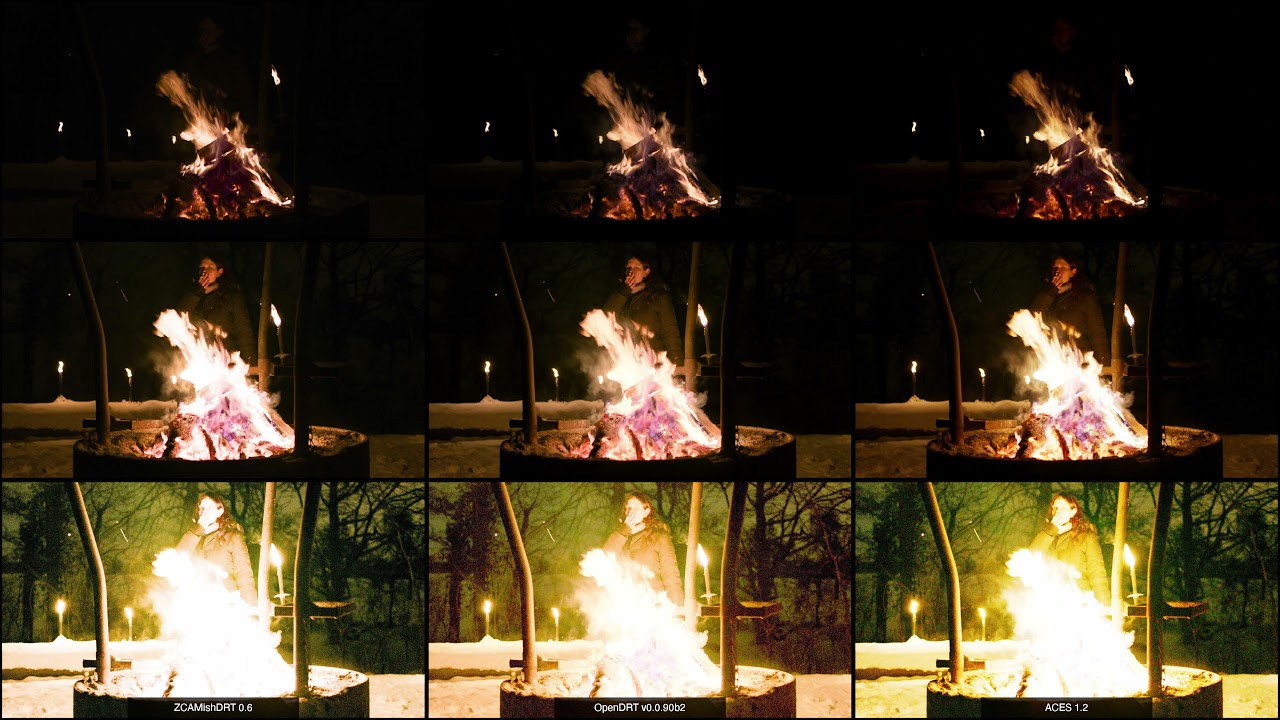I’ve put together a clip with a bunch of example footage and still images running through the 3 DRTs.
Left Column: ZCAMishDRT Alpha 0.6
Middle Column: OpenDRT v0/0/90b2
Right Column: ACES 1.2
Top Row: -5 Stops
Middle Row: Standard Exposure
Bottow Row: +5 Stops
Still frames all do a -5 to +5 Exposure sweep over 51 frames.
The idea with the -5 and +5 offsets is to give you something to compare when trying to get a sense of “does this image feel like the same image, or are the proportions shuffled around as exposure changes?”
Whilst ZCAMishDRT’s approach to gamut compression helps here, by always preferencing Brightness over Colour intensity, it can lead some images feeling like they desat too fast. The question there is, which matters more? The colour of the light, or the quantity of the light?
Currently, the area that looks the worst to me is ZCAMishDRT’s handling of very bright, but only moderately saturated, areas holding on to too much saturation as they approach the clipping point. This can most clearly be seen on the clips outside the Mercedes Benz museum. Perhaps it’s going to need an explict highlight desat tied to the tonemapping section, rather than the gamut volume compressor alone?
